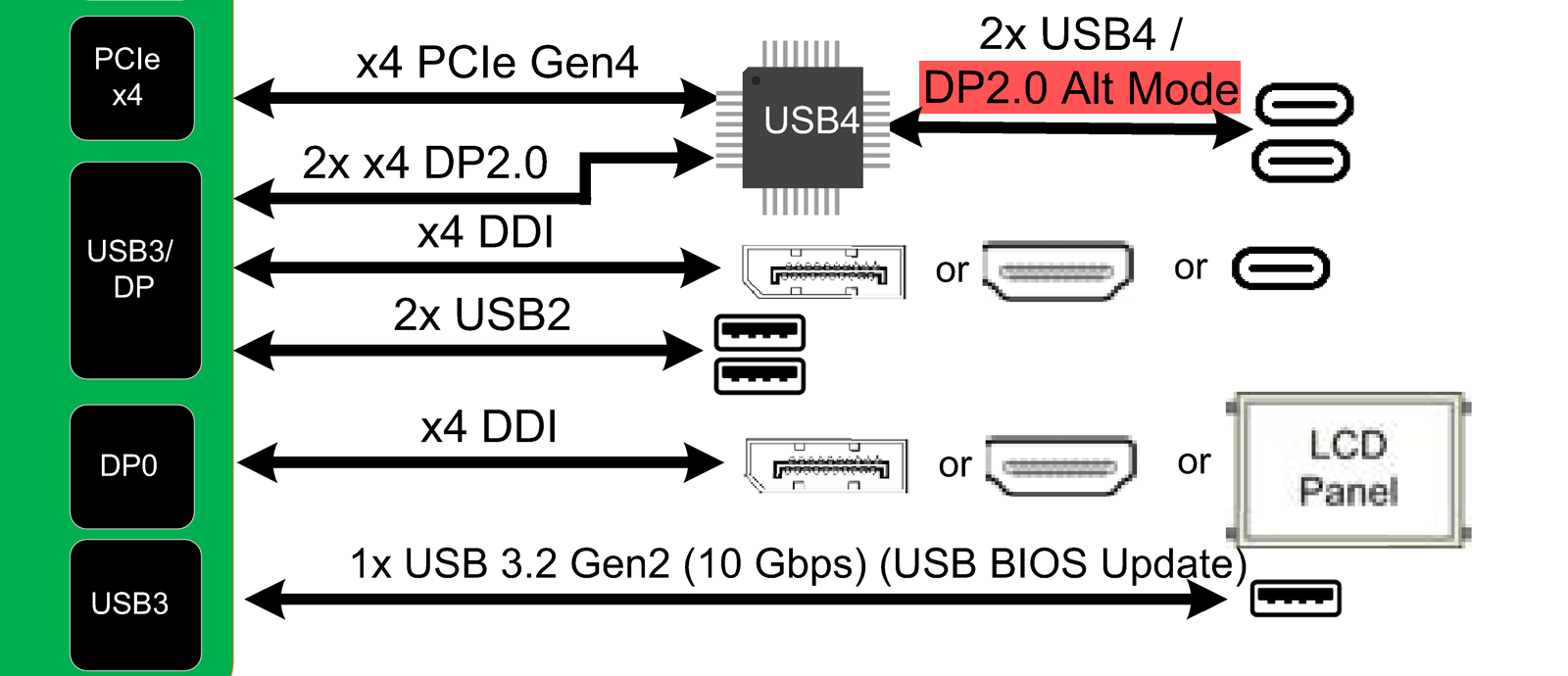The AM5 platform also seems quite interesting in terms of video output equipment. Basically, it makes sense. Integrated graphics will not only be offered by APUs, but (probably optional) will also be offered by large processors. So it made sense for AMD to expand and update its video output capabilities. As has been the tradition since the launch of AM4, AMD strives to offer a flexible interface that allows motherboard manufacturers to choose how to use this interface. It is similar with AM5, also in relation to video outputs:
The platform has a dual interface that can be used to implement video outputs. On the one hand, it is the interface in the diagram (black square almost at the bottom right) marked as DP0. This allows direct connection of HDMI, DisplayPort, embedded DisplayPort, DVI, or (using a DP converter) LVDS and VGA connectors. The so-called StereoSync output is also supported.
In addition to the DP0, there is always a USB3 / DP interface available, which can operate in two modes. If the system is not equipped with a separate USB4 controller, then this interface offers three more outputs that the board manufacturer can use as a DisplayPort / HDMI / USB Type-c output. This brings up to four parallel video interfaces on the motherboard.
If a USB4 controller is installed (which is connected to four PCIe ports and two DisplayPort 2.0 interfaces of the mentioned USB3 / DP), then both USB4 Type-c interfaces mediated by this controller will offer DisplayPort 2.0 (Alt Mode) support. As a reminder: one such interface has a transmission speed of 80 Gb / s, which allows you to connect a 3 × 4K display with 90Hz refresh rate and HDR, or a 2 × 4K display with 144Hz refresh rate, or a 10K display at 60 Hz. Up to 3 × 10K display with HDR or 16K display with HDR can be connected using visually lossless DSC (Display Stream Compression). The USB3 / DP interface will still have enough power to operate one DisplayPort / HDMI / USB Type-C and two USB 2.0. The output of the separate DP0 interface remains intact. What this means: Even after mounting a USB4 controller, the maximum number of connected monitors does not decrease, only two of them are upgraded and hard-coded to DisplayPort 2.0 (USB 4.0 Type-C Alt Mode).
Using a suitable combination of AM5 board and core processor Zen 4 so there may be a possibility (without the need for a separate graphics card) to connect the wall from six 10K displays with a total resolution of 30720 × 8640, ie 265 megapixels (and a separate 4K panel, or two). In practice, many users will probably not run this and it is difficult to say whether all processor models for the AM5 socket will have an interface that can feed such a configuration, however, some models certainly will, otherwise there would be no reason to dimension the motherboard. Anyway – RIP Matrox.
–



